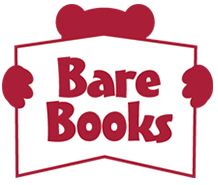Native American Board Game
Learn about how games reflect a culture’s beliefs.
Level: Grade 5
Adapted from a lesson prepared by: Tish Raff, Instructor at the College of Notre Dame of Maryland, Educational Consultant, and Freelance Writer
Students will:
- Discuss how games reflect a culture’s beliefs, priorites, and aspects of everyday life.
- Learn about a few games and toys of native American children
- Analyze basic elements of a selected Native American tribe in order to apply them to the creation of an original board game that can be played by today’s children.
Materials needed:
- A Monopoly game
- Reference materials including print and Internet resources
- A blank game board
Procedure:
- Open the Monopoly bard and ask your students to identify different parts of the game. Talk about the different tokens, the play money, the houses and the different places. Ask them to discuss why the game’s creator, Charles Darrow, might have chosen these items and places for the game. Discuss the goal of the game. How do the items and goals of the game reflect life in America? (Consult https://en.wikipedia.org/wiki/History_of_the_board_game_Monopoly for additional historical information.)
- Explain that games and toys are a part of many cultures, bot past and present. These games can reflect a culture’s beliefs, priorities, or general aspects of everyday life. For example, most Native American plas was focused on learning skills to prepare children for adult responsibilities. Toys were often miniature replicas of tools and implements, and play imitated adult tasks. However, some Native American games were strictly for fun and chance.
- Tell students that they will be studying a Native American tribe, then creating a board game highlighting aspects of life in that tribe. Be sure they understand they are not creating a game that my have been played by that tribe – since they did not play board games – but instead creating a board game for today’s children that teaches about that tribe.
- Next, discuss how a board game might be able to convey information about the culture they studied. Use the following questions and their current knowledge of Native American groups to spark discussion:
- What could a game board show about life in a Native American tribe or nation?
- What kinds of tokens might be used to reflect information or ideas about the tribe?
- What would be an appropriate “reward” during the game – like the play money in Monopoly?
- Your game might include positive events that move a player forward, or negative events that set a player back. Think of a few eamples of positive and negative events that were common in Native American tribes. (Such events might be “catching many fish” or “bad draught.”)
- How could the game be objective and rules tell something about life in this tribe?
- Divide your class into groups of two or three, and assign each group a Native American tribe. Have them use the reference materials to learn about their assigned tribe and record what they learn.
- Next, challenge your students to create a board game that reflects what they’ve learned about their assigned tribe. If there is enough time, you may want to have them design the game boxes too, so that the games can become part of your classroom resources for indoor recess or center time.
- When the games are completed, have teams exchange their games with two other teams and play each other’s games.
Discussion Questions
- Before you began this lesson, what images came to mind when you heard the term Native American? Now that you’ve learned about a few different tribes, what images come to mind? What are some of the common misperceptions of Native Americans?
- Think of two Native American tribes you’ve learned about. How are they similar? How are they different?
- What can games show about people, places, and cultures? What are some games that might show something about popular culture in the United States today? What do they show about life in the United States?
- List 10 things you would want to learn about a group or culture to help you understand it better. How would you describe your own culture using those 10 things?
- Why do you think many Native American games encouraged children to learn adult responsibilities?
- What is the purpose of reservations for Native Americans in the United States today?
Recent Posts


